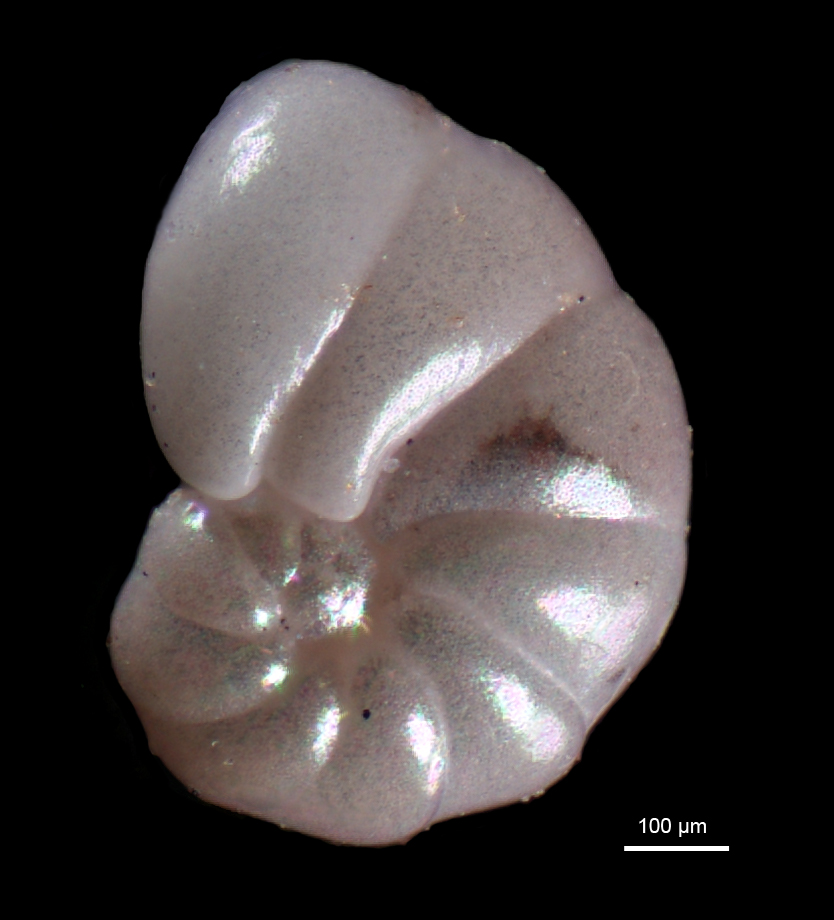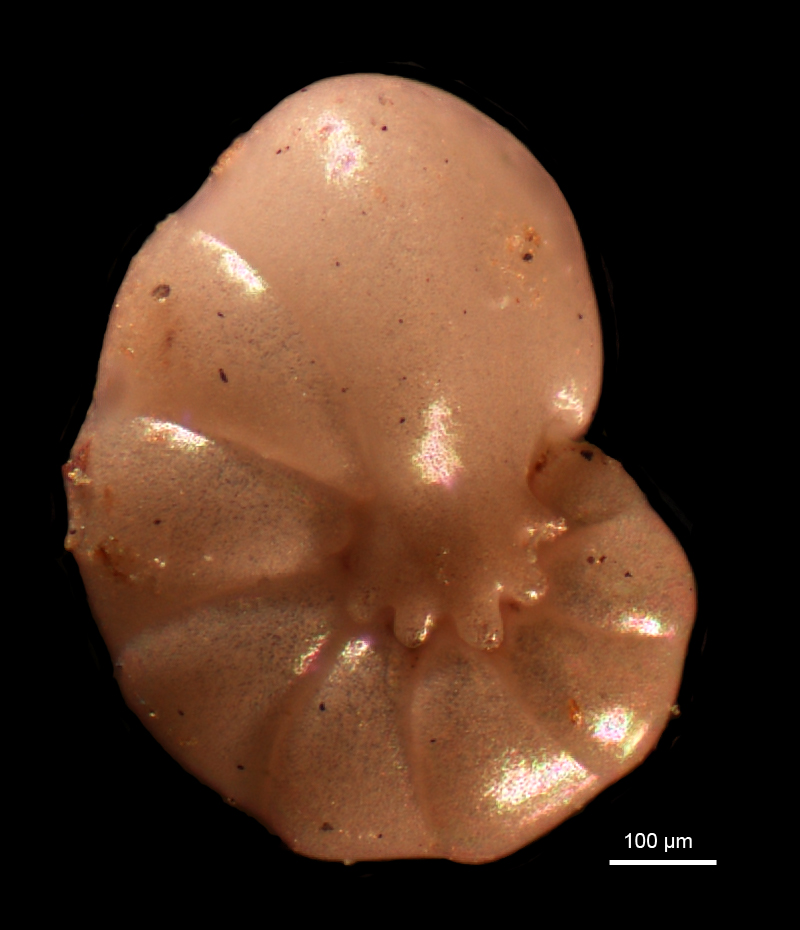Genus – Nonionella
Nonionella Rhumbler, 1949
The taxonomic history of the species Nonionella stella is complex. Cushman (1926) redefined Rhumbler’s genus Nonionella based on his new species Nonionella miocenica with the holotype from the Miocene-age Monterey Shale of central California. Cushman and Moyer (1930) described N. miocenica variety stella from Recent specimens, and this was raised to species level by Lankford and Phleger (1973). The species description of N. miocenica is included below as it includes characteristics essential for identification
Nonionella stella (Cushman and Moyer, 1930)
Nonionella miocenica var. stella Cushman and Moyer, 1930, p. 56. pl. 17, fig. 17 a-c: Cushman and McCulloch, 1940, p. 162, pl. 18, fig. 2a-c; Bandy, 1940, pl. 22, figs. 2a-c; Cushman and Todd, 1947, p. 14, pl. 2, fig. 18.
Nonionella stella (Cushman and Moyer, 1930) Lankford and Phleger, 1973, p. 123, pl. 3, figs. 13, 14; McGann, 2007, p. 66, pl. 10, fig. BB; Patterson, Burbridge and Laternauer, 1998, p. 20, pl. 22, fig. 1; Vázquez Riveiros and Paterson, 2008, Figs. 12.3a-12.3c.
Description: Variety differing from the typical stellate character of the inner end of the last-formed chamber on the ventral side which develops short finger-like processes over the previous sutures.
Nonionella miocenica Cushman 1926, p. 64;
Nonionina auris Cushman, 1926a, p. 91, pl. 13, figs 4a-c.
Description: Test subtrochoid, small, periphery broadly rounded, 8-10 chambers in the last-forming coil, distinct, dorsal side not completely involute; the sutures obliquely curved, the last chambers with umbilical end forming a distinct rounded lobe; wall smooth; aperture elongate. Length, 0.45 mm, breadth, 0.35 mm. thickness, 0.25 mm.
Distribution: Cushman and McCulloch (1940) note that N. stella is distributed along the entire west coast of North America from Alaska (at depth of 2-6m) to Mexico (below 100 m depth. N. stella in the Santa Barbara Basin is notably tolerant of low O2 levels (Bernard and Bower, 1999). In Puget Sound this species is particularly common at the distal end of Hood Canal and is scattered through semi-enclosed embayments, such as Thea Foss Waterway and Bellingham Bay.


